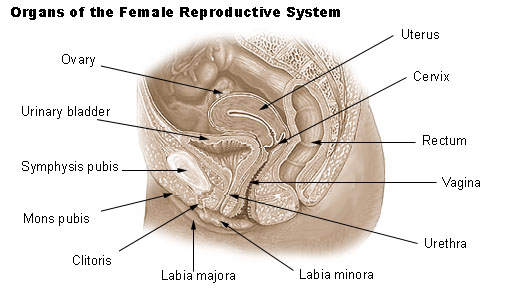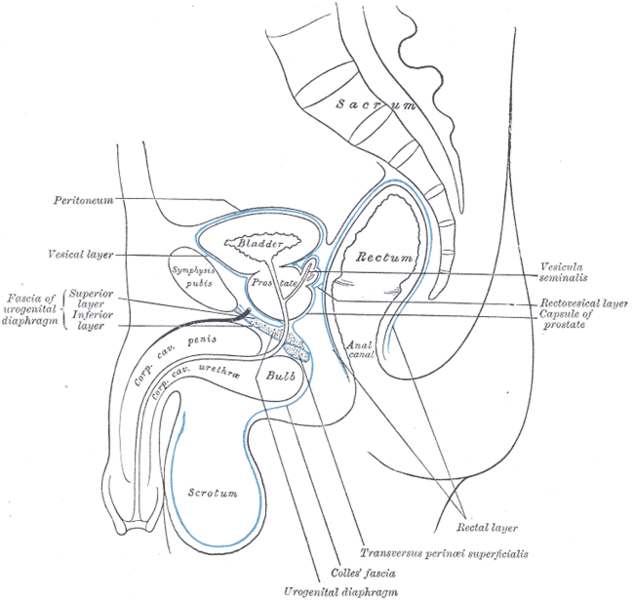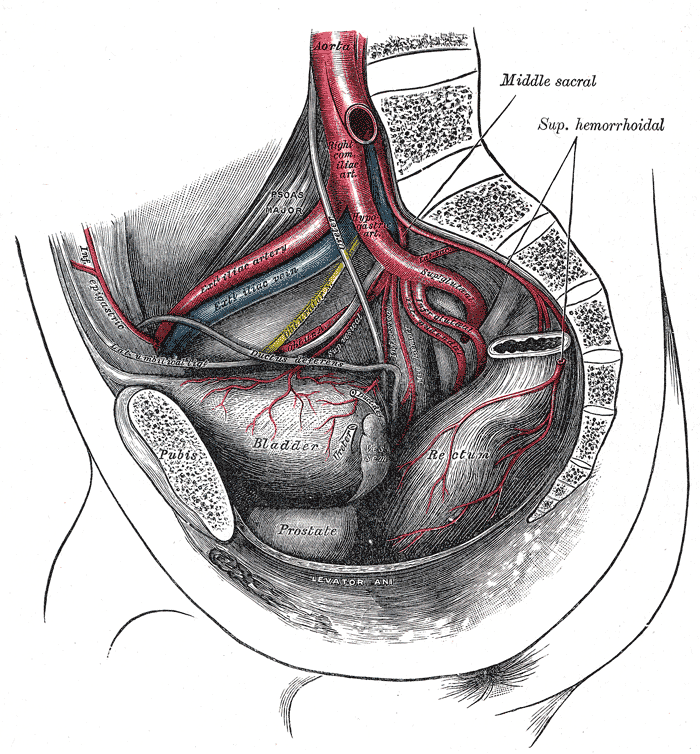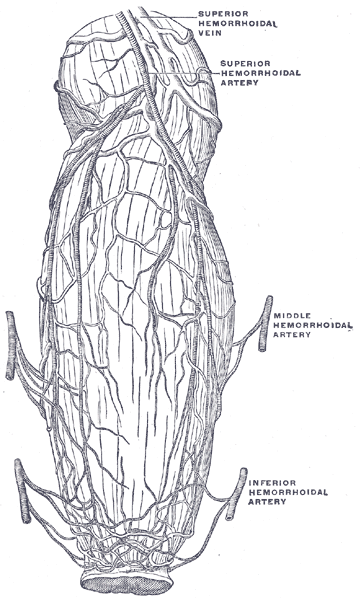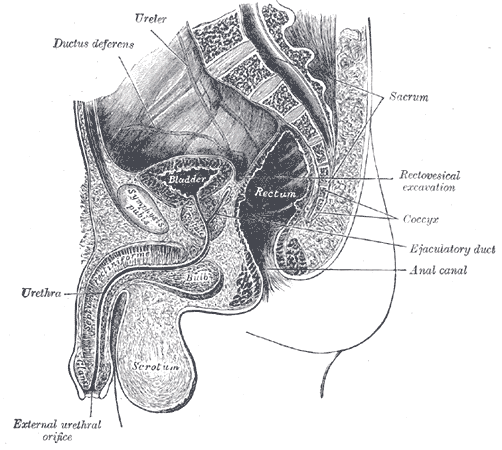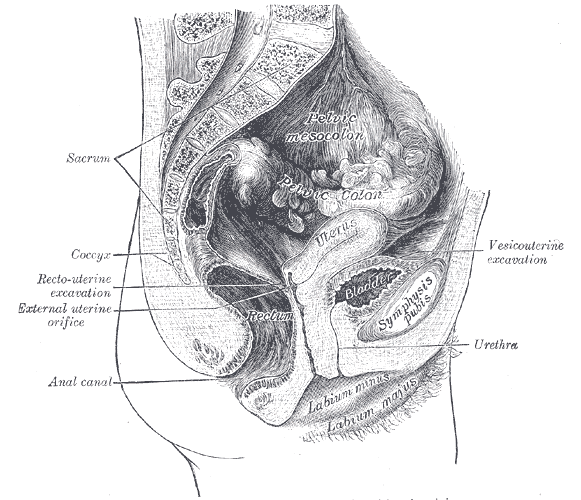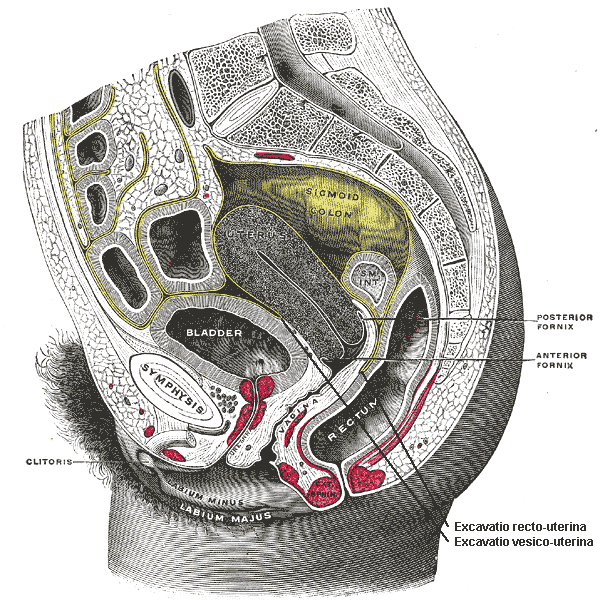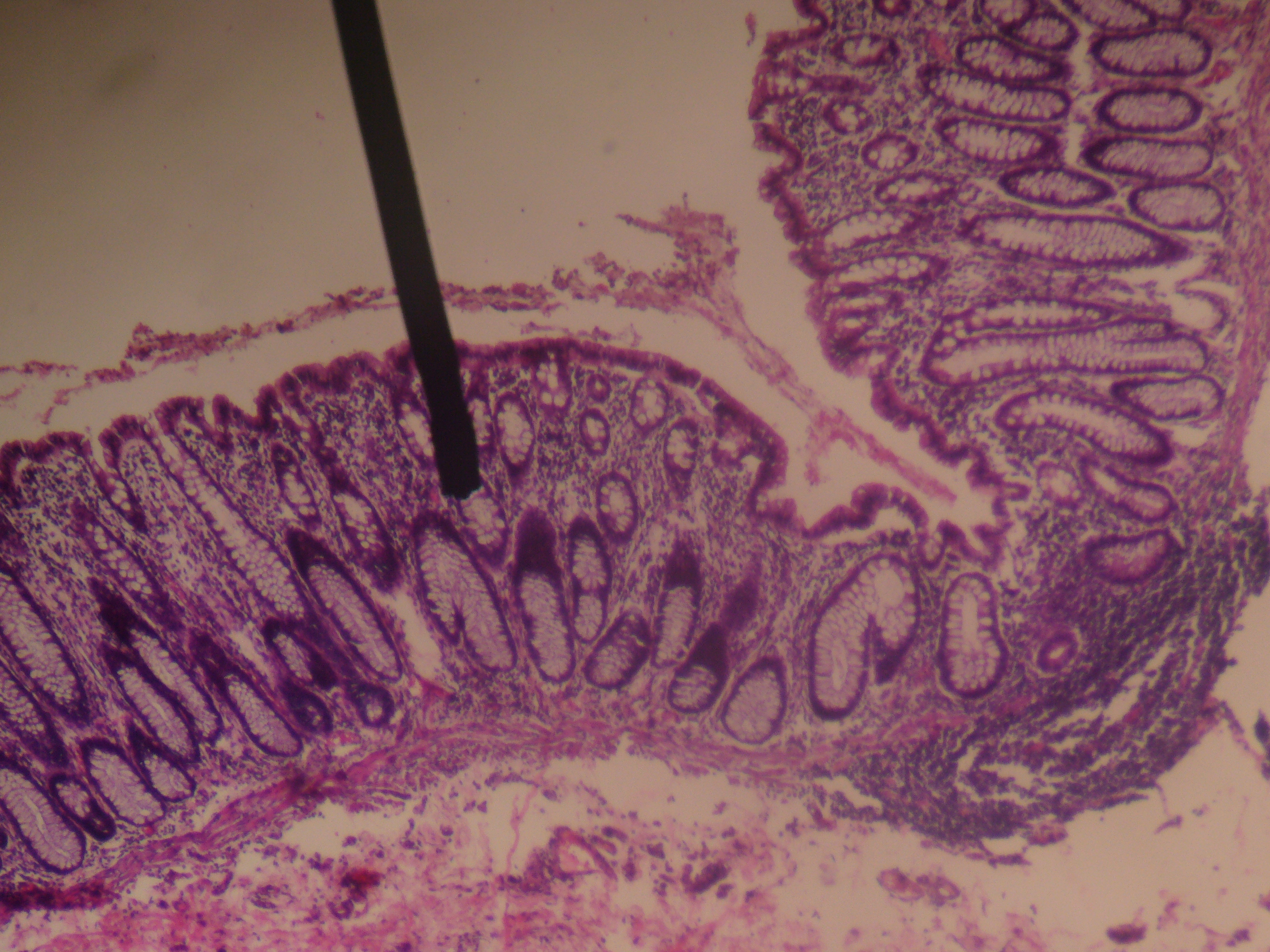Rectum
Editor-In-Chief: C. Michael Gibson, M.S., M.D. [1]
Overview
|
WikiDoc Resources for Rectum |
|
Articles |
|---|
|
Media |
|
Evidence Based Medicine |
|
Clinical Trials |
|
Ongoing Trials on Rectum at Clinical Trials.gov Clinical Trials on Rectum at Google
|
|
Guidelines / Policies / Govt |
|
US National Guidelines Clearinghouse on Rectum
|
|
Books |
|
News |
|
Commentary |
|
Definitions |
|
Patient Resources / Community |
|
Directions to Hospitals Treating Rectum Risk calculators and risk factors for Rectum
|
|
Healthcare Provider Resources |
|
Continuing Medical Education (CME) |
|
International |
|
|
|
Business |
|
Experimental / Informatics |
The rectum (from the Latin rectum intestinum, meaning straight intestine) is the final straight portion of the large intestine in some mammals, and the gut in others, terminating in the anus. The human rectum is about 12 cm long. At its commencement its caliber is similar to that of the sigmoid colon, but near its termination it is dilated, forming the rectal ampulla.
Role in human defecation
The rectum intestinum acts as a temporary storage facility for feces. As the rectal walls expand due to the materials filling it from within, stretch receptors from the nervous system located in the rectal walls stimulate the desire to defecate. If the urge is not acted upon, the material in the rectum is often returned to the colon where more water is absorbed. If defecation is delayed for a prolonged period, constipation and hardened feces results.
When the rectum becomes full the increase in intrarectal pressure forces the walls of the anal canal apart allowing the fecal matter to enter the canal. The rectum shortens as material is forced into the anal canal and peristaltic waves propel the feces out of the rectum. The internal and external sphincter allow the faeces to be passed by muscles pulling the anus up over the exiting faeces.
Medical procedures
For the diagnosis of certain ailments, a rectal exam may be done.
Suppositories may be inserted into the rectum as a route of administration for medicine.
The endoscopic procedures colonoscopy and sigmoidoscopy are performed to diagnose diseases such as cancer.
Temperature taking
Body temperature can also be taken in the rectum. Rectal temperature can be taken by inserting a mercury thermometer for 3 to 5 minutes, or a digital thermometer until it "beeps", not more than 25 mm (1 inch) into the rectum via the anus. Due to recent concerns related to mercury poisoning, the use of mercury thermometers is now discouraged. Normal rectal temperature generally ranges from 36 to 38 °C (97.6 to 100.4 °F) and is about 0.5 °C (1 °F) above oral (mouth) temperature and about 1 °C (2 °F) above axillary (armpit) temperature.
Many pediatricians recommend that parents take infants and toddler's temperature in the rectum for two reasons:
- (1) Rectal temperature is the closest to core body temperature and in children that young, accuracy is critical.
- (2) Younger children are unable to cooperate when having their temperature taken by mouth (oral) which is recommended for children, ages 6 and above and for adults.
In recent years, the introduction of ear (tympanic) thermometers and changing attitudes on privacy and modesty have led some parents and doctors to discontinue taking rectal temperatures.
Sexual stimulation
Due to the proximity of the anterior wall of the rectum to the vagina in females or to the prostate in males and the shared nerves thereof, rectal stimulation or penetration can result in sexual arousal. For further information on this aspect, see anal sex.
Additional images
-
Organs of the female reproductive system.
-
Median sagittal section of pelvis, showing arrangement of fasciæ.
-
The arteries of the pelvis.
-
Section of mucous membrane of human rectum. X 60.
-
The blood vessels of the rectum and anus.
-
Median sagittal section of male pelvis.
-
Median sagittal section of female pelvis.
-
Sagittal section of the lower part of a female trunk, right segment.
-
The rectum can be seen the left of this illustration.
-
Cross section microscopic shot of the rectal wall.
See also
- Gastrointestinal tract
- Rectal prolapse
- Latus rectum (conic section)
- Semi-latus rectum
- pectinate line
References
External links
- Template:ViennaCrossSection
- Template:ViennaCrossSection
- Template:SUNYAnatomyImage
- Template:SUNYAnatomyLabs - "The Female Pelvis: The Rectum"
- KMLE Medical Dictionary definition of rectum retrieved from KMLE Medical Dictionary on 2007-03-25
Template:Digestive system
Template:Human anatomical features
ar:مستقيم cs:Konečník da:Endetarm de:Mastdarm eo:Rektumo io:Rektumo id:Rektum it:Retto he:חלחולת lt:Tiesioji žarna nl:Endeldarm no:Endetarmen simple:Rectum sk:Konečník fi:Peräsuoli sv:Ändtarm
